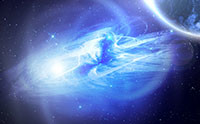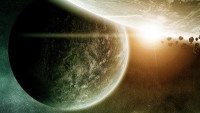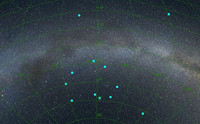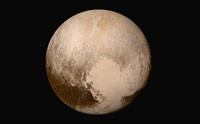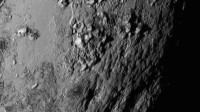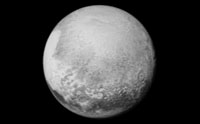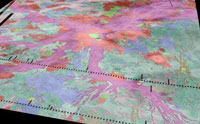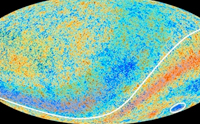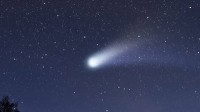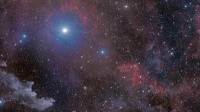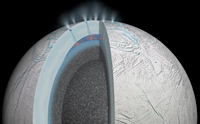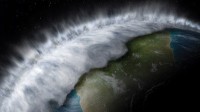How did our solar system get here? Those who dismiss any possibility of creation imagine ways that pure natural forces might set in motion the sun, each unique planet and their moons. New computer modeling results seem to show promise—but only when they overlook or assume obvious and important factors. More… …read more Read more here: icr.org
By Dr. Danny Faulkner We here at Answers in Genesis believe that life is unique to Earth, so is the discovery of Kepler-452b a problem for us? …read more Read more here: AIG Daily
Progressive creationist Hugh Ross has declared as fact something about the alleged big bang that even evolutionists want to be true but have not claimed. …read more Read more here: creation.com
Despite claims that stars formed from primordial clouds of gas, the known laws of physics show that to be impossible. …read more Read more here: creation.com
By Dr. Danny Faulkner The asymmetry between matter and antimatter is not a problem if God created the universe as Genesis 1 says that He did. …read more Read more here: AIG Daily
A team of astronomers from Hungary and the United States, led by Professor Lajos Balázs of Konkoly Observatory in Budapest, has announced the discovery of an enormous ring of galaxies. According to the Big Bang model, this ring should not exist. More… …read more Read more here: icr.org
Astronomers have discovered what appears to be the largest feature in the observable universe, and—according to the Big Bang model—it shouldn’t even exist. A team of Hungarian and U.S. astronomers say they have discovered a huge ring of nine gamma ray bursts (GRBs) that is five billion light years across. The scientists detailed their findings in “Monthly Notices of the Royal Astronomical Society.” GRBs are thought to be the result of massive stars collapsing into black holes. Because black holes are typically found inside galaxies, astronomers say the ring of GRBs is evidence of a gigantic galaxy ring. All nine [More]
A darkness clouds the thinking of physicists, from dark matter to dark energy, dark fluid, dark flow, dark radiation and-now-dark photons. …read more Read more here: creation.com
The discovery of Earth 2.0 has evoked a speculative frenzy about it being habitable but does reality match the rhetoric? …read more Read more here: creation.com
Congratulations to the New Horizons team on their remarkable achievement of sending a spacecraft to Pluto. The mission was a complete success, and we are enjoying high-resolution images of never-before-seen surface features of this distant little world. These pictures dazzle the mind and are already beginning to challenge secular thinking. More… …read more Read more here: icr.org
By Dr. Danny Faulkner What recent photos of Pluto revealed was a shock to conventional uniformitarian scientists who believe in a 4.5-billion-year-old solar system. …read more Read more here: AIG Daily
Today, more than nine years after its launch, the New Horizons spacecraft is scheduled to make its closest approach to the dwarf planet Pluto. This will make New Horizons the first space probe to examine Pluto and its moons up close during this historic flyby. A NASA press release states, “A close-up look at these worlds from a spacecraft promises to tell an incredible story about the origins and outskirts of our solar system.” But what is the real story? More… …read more Read more here: icr.org
The tortured surface of Venus appears to have been formed through recent geologic processes, and its rocks contain no record of deep time. What if Venus were young rather than 4.5 billion years old? It would explain quite a bit, including a brand-new discovery made by scientists peering through its dense atmosphere. More… …read more Read more here: icr.org
Stars have an amazing variety, and pose problems for evolutionary views of their origin. …read more Read more here: creation.com
If theistic evolution is true, is God responsible for the universe? …read more Read more here: creation.com
Computer modelling that has led to dire warnings about climate change is built on questionable understanding of cloud behaviour. …read more Read more here: creation.com
It’s now non-existent and scientists are puzzled about why it had one in the first place. …read more Read more here: creation.com
In a new paper, scientists have announced the discovery of an enormous region of lower-than-average galaxy density about three billion light-years from Earth. This “supervoid,” the largest single structure ever discovered at 1.8 billion light-years across, is newsworthy in its own right. However, it also has implications for the Big Bang model of the universe’s origin. More… …read more Read more here: icr.org
By Dr. Danny Faulkner Whether there is a continuum on which our older conception of asteroids and comets are extremes or if there still is a gap between them is not entirely clear. …read more Read more here: AIG Daily
How clusters of stars lacking dust and gas impact the age of the universe. …read more Read more here: creation.com
By Dr. Danny Faulkner The Principle is a documentary film in defense of an absolute geocentric model, in which the entire universe moves around the Earth. …read more Read more here: AIG Daily
The more we learn about Enceladus, the younger it looks. Stated another way, the more that our space probes discover about this fascinating little moon that inhabits Saturn’s tenuous E ring, the more challenging it becomes for conventional origins to explain. A new discovery adds to the list of young-looking Enceladus features. More… …read more Read more here: icr.org
By Dr. Danny Faulkner Dr. Danny Faulkner analyzes Dr. Walt Brown’s determination of the date of the Flood within his hydroplate model using the orbits of two comets. …read more Read more here: AIG Daily
Despite no verifiable evidence in support of dark matter, its existence is being presented to the public as established fact. …read more Read more here: creation.com
Geological features that scientists struggle to explain likely of impact origin. …read more Read more here: creation.com
Will studies revealing a quasar with a much-too-massive black hole and a galaxy with young space dust lead to the downfall of the big bang model? …read more Read more here: AIG Daily
Not content with everything creating itself from nothing, the latest development in big bang theory even does away with a beginning. …read more Read more here: creation.com



















